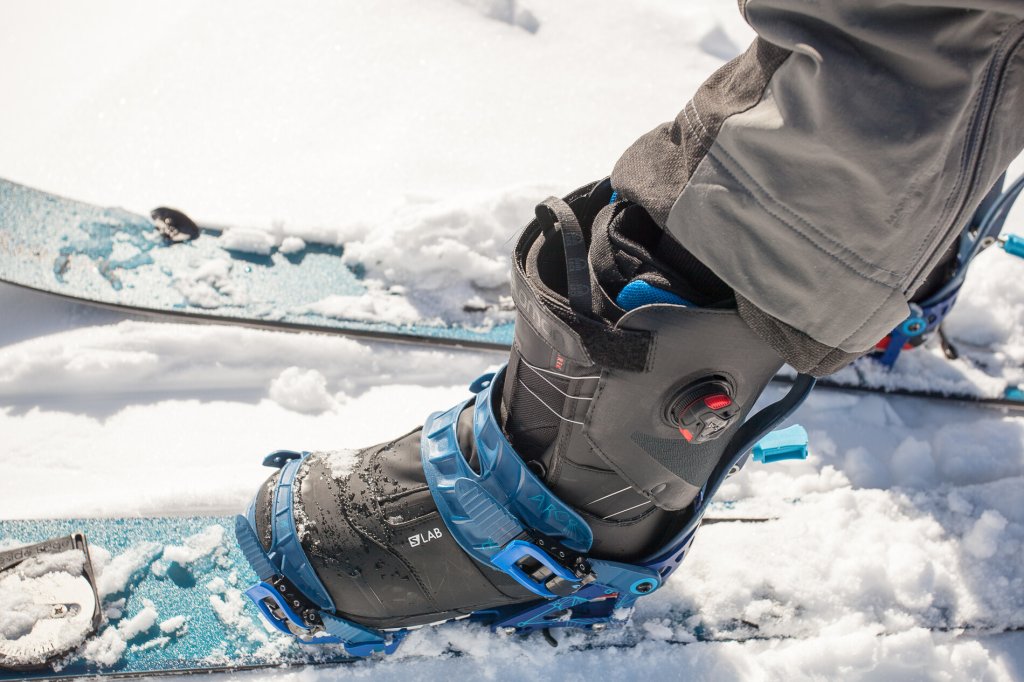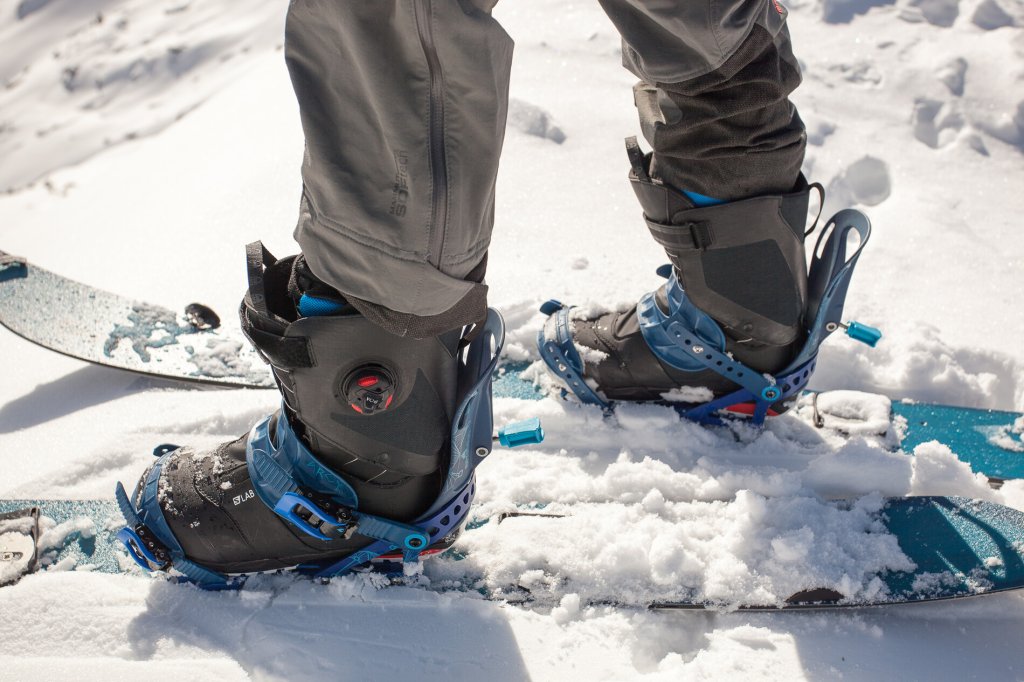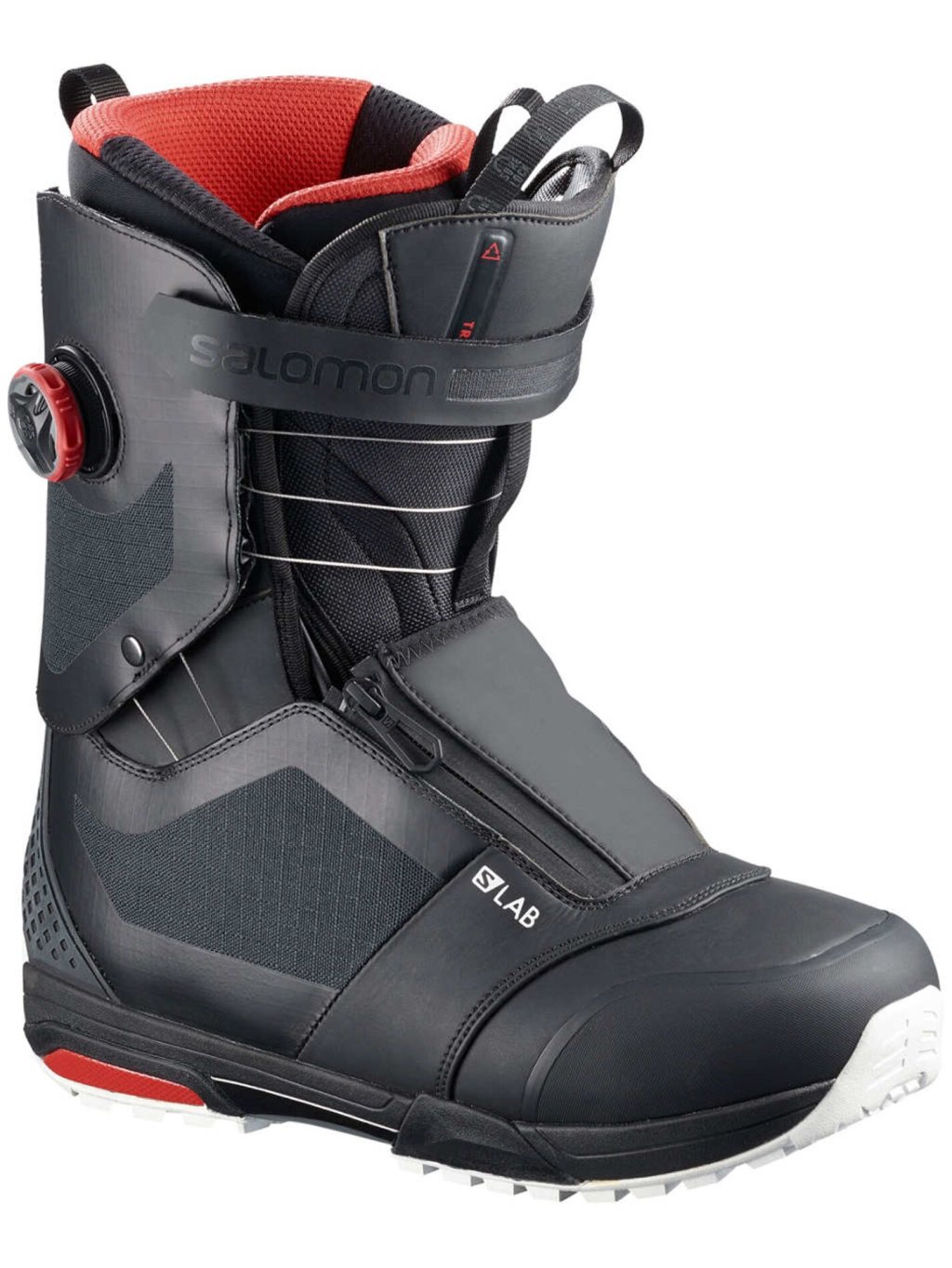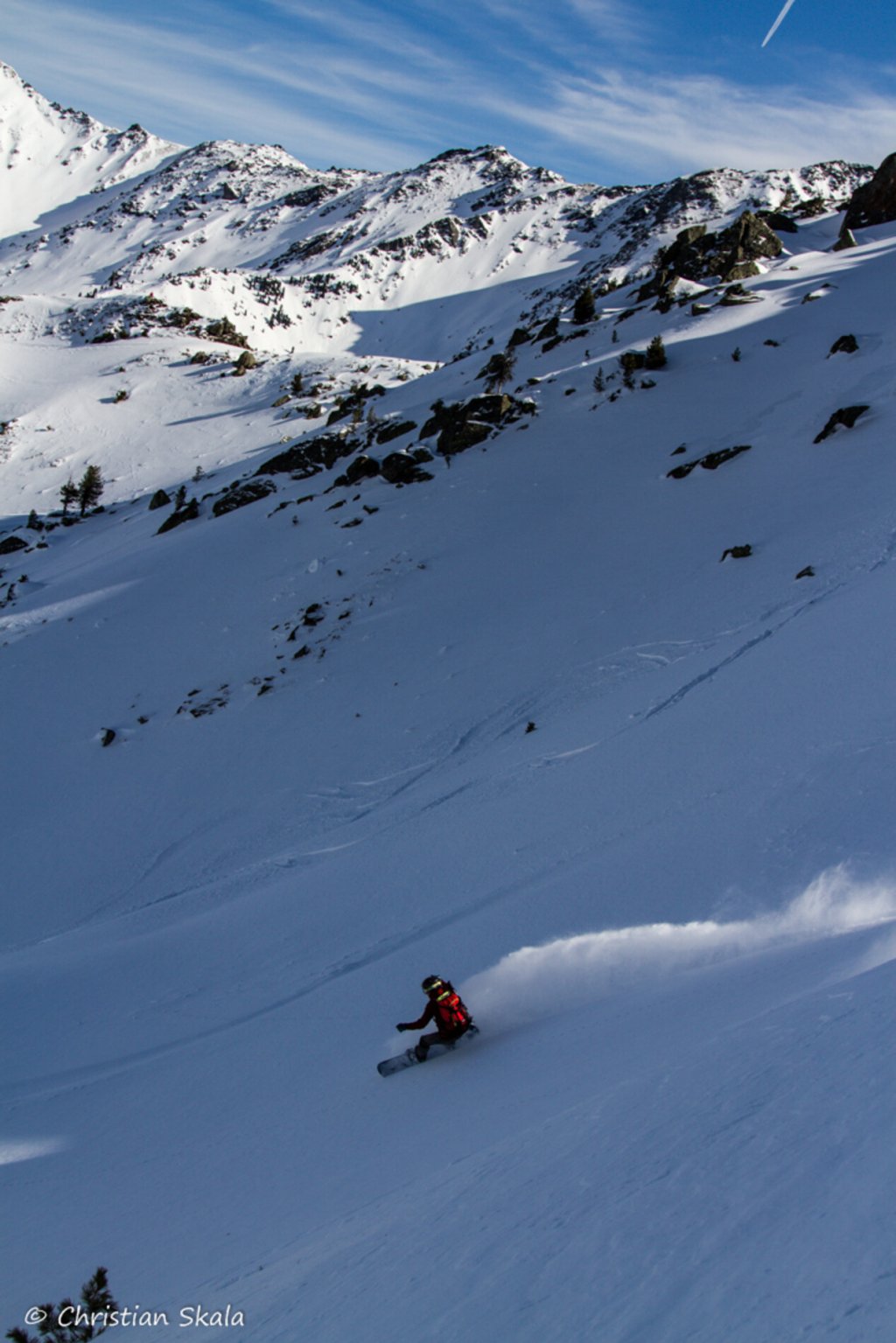For the 18/19 season, Salomon has introduced a snowboard boot that has never been seen before in this form. The Salomon TREK S/LAB has a special soft boot walking mechanism for the ascent and is therefore an interesting boot for the soft boot touring faction alongside Thirty-Two and Deeluxe, which offer technically different walking mechanisms. We have tested for you whether the high-priced boot can fulfil its promise of ultimate stride length.
The special feature of the TREK/S LAB is its innovative walking mechanism. Salomon has equipped the shoe with a movable shaft that can be fixed by the BOA lacing. A video says more than 1000 words.
FIRST IMPRESSION
The Salomon TREK/S-Lab looks stylish when you take it out of the packaging for the first time. Trying it on for the first time reveals a comfortable boot, the BOA system on the outside works well and you can buckle the boot very tightly. However, the front lacing is questionable as it is limited by a bulky plastic part and a snow guard. If you tinker with the laces in the snow guard and close the zip, you end up with a small bulge. It didn't bother me when riding or walking later, but I would have solved the forefoot lacing differently.
If you have the BOA completely open, you can stand and walk very comfortably. That's why the boot is certainly also suitable for park shapers or other snowboard professionals (coaches, instructors) who spend a lot of time standing or walking.
There is also a Velcro strap that fixes the liner to the outer shoe to reinforce the heel hold, as well as a top strap to fix the tongue to the outer shoe.





